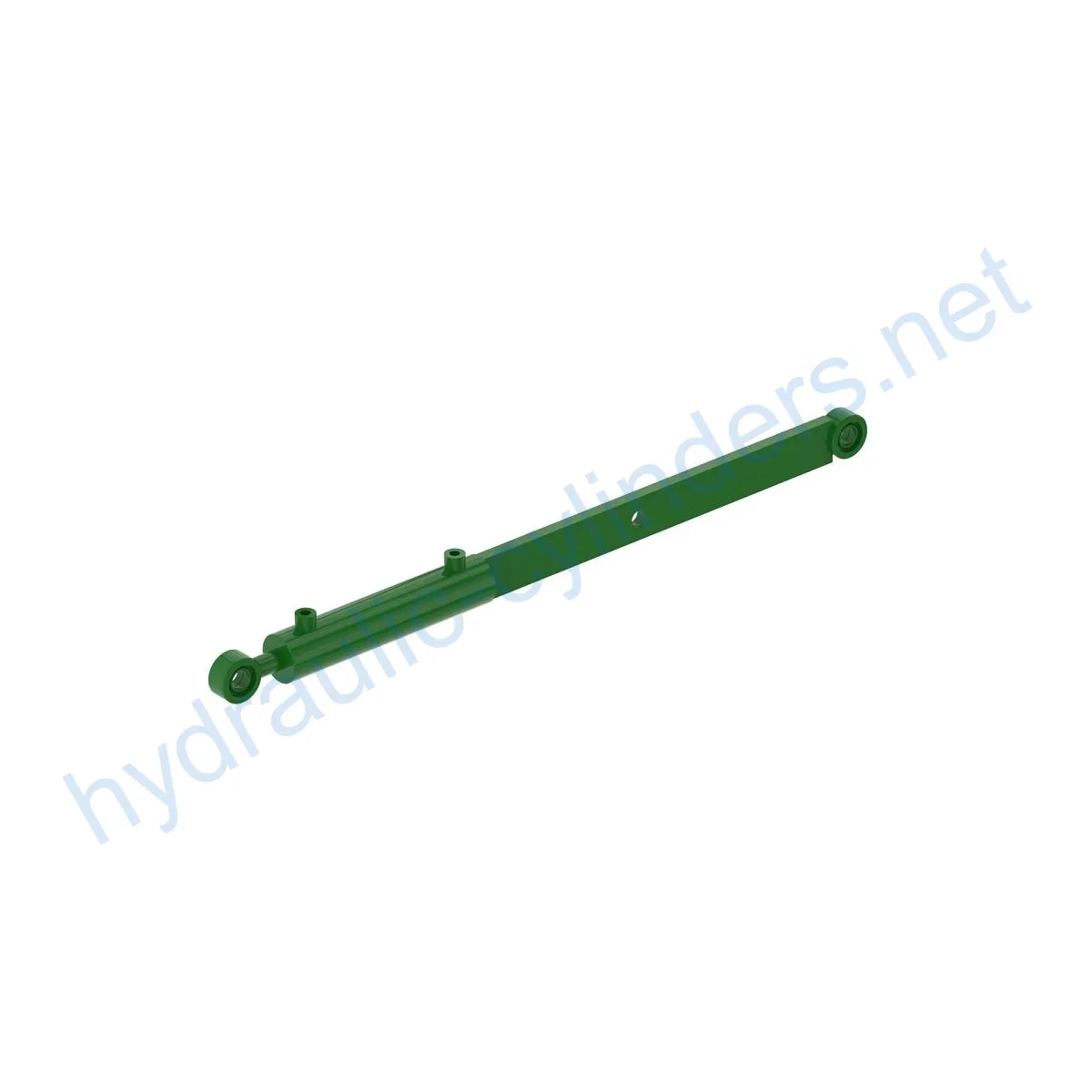Replacement Of AHC15813 Hydraulic Cylinder
Jako jeden z producentów, dostawców i eksporterów produktów mechanicznych, oferujemy cylindry hydrauliczne i wiele innych produktów.
Prosimy o kontakt w celu uzyskania szczegółowych informacji.
Poczta:sales@hydraulic-cylinders.net
Producent dostawca eksporter siłowników hydraulicznych.
Replacement Of AHC15813 Hydraulic Cylinder
Product Introduction
The Replacement Of AHC15813 Hydraulic Cylinder is a hydraulic component used in various applications. It is designed to provide reliable performance and ensure the smooth operation of equipment.
Specifications and Model
Weight: 17.82 lb
Height: 2.5 in
Width: 3.3 in
Length: 38.8 in
Model: W235 W260
Key Features
- Improved Equipment Performance: Replacing damaged or worn hydraulic cylinders can restore the normal operation of equipment, ensuring its performance in various applications.
- Enhanced Safety: Regularly replacing hydraulic cylinders reduces safety hazards caused by cylinder failure, ensuring the safety of operators and equipment.
- Overload Protection: New cylinder designs often incorporate better overload protection mechanisms, improving safety.
- Quick Installation: Modern hydraulic cylinders are designed for easy installation and replacement, minimizing downtime.
- Standardized Components: Many hydraulic cylinders are standardized products, making it easier to obtain replacement parts in the market.
Applications
- Excavators: Hydraulic cylinders in excavator arms or buckets may become damaged due to prolonged use or overload, requiring replacement for normal operation.
- Cranes: Hydraulic cylinders in crane booms are prone to wear and tear during frequent lifting and lowering, necessitating regular replacement for safety.
- Tractors: Hydraulic cylinders in front-end loaders of tractors may develop leaks or performance degradation due to continuous lifting and tilting operations, requiring replacement.
- Harvesters: Hydraulic systems in harvesters endure high pressure during the harvesting process, and cylinders may get damaged due to fatigue, requiring timely replacement to maintain efficiency.
- Automated Production Lines: Hydraulic cylinders are used to control robotic arms and other automated equipment. Cylinder failure can impact production efficiency, necessitating immediate replacement.
- Die-casting Machines: Hydraulic cylinders in die-casting machines may experience performance degradation in high-pressure and high-temperature environments. Regular replacement ensures product quality.
- Mining Equipment: Hydraulic cylinders are used for lifting and moving heavy loads in mining equipment. Due to harsh working conditions, regular inspection and replacement are necessary to avoid equipment failure.
- Bulldozers: Wear of hydraulic cylinders on bulldozer blade arms can lead to decreased bulldozing capability, requiring timely replacement to maintain operational efficiency.
Maintenance Tasks
- Regular Inspections: Periodic inspections help identify any issues with the hydraulic cylinder and ensure its proper functioning.
- Proper Lubrication: Adequate lubrication is essential for the smooth operation of the cylinder. Using the recommended hydraulic oil and lubricating the components regularly is crucial.
- Seal Replacement and Calibration Checks: Regularly replacing worn seals and performing calibration checks ensures the optimal performance of the hydraulic cylinder.
Safety Considerations and Environmental Factors
When using hydraulic cylinders, it is important to follow safety measures to prevent accidents and ensure the safety of operators and the surrounding environment. Proper training, adherence to safety guidelines, and the use of appropriate protective equipment are essential.
Troubleshooting and Common Issues
1. Cylinder Leakage: If the hydraulic cylinder is leaking, check the seals and connections for damage or wear. Replace any faulty components and reassemble the cylinder.
2. Erratic Cylinder Movement: Inconsistent or jerky cylinder movement may indicate issues with the hydraulic system, such as insufficient hydraulic pressure or contaminated fluid. Check the system for any problems and address them accordingly.
3. Excessive Cylinder Noise: Unusual noises from the hydraulic cylinder could be a sign of air in the system or loose components. Bleed the system and tighten any loose connections to resolve the issue.
Fault Handling and Prevention
To effectively diagnose and resolve hydraulic cylinder issues, follow these tips:
- Refer to the manufacturer’s guidelines for troubleshooting and repair procedures.
- Provide preventive maintenance, such as regular inspections and lubrication.
- Implement proper installation techniques, including aligning the cylinder correctly and using suitable mounting brackets for stability.
- Offer replacement parts and rebuilding services to extend the lifespan of the hydraulic cylinder.
- Share tips and techniques for improving the longevity of the hydraulic cylinder.

Design Considerations and Selection Criteria
When selecting a hydraulic cylinder, consider the following design aspects:
- Load-bearing Capacity: The hydraulic cylinder should have the necessary strength to withstand the intended load.
- Sealing Capability: High-quality seals should be used to ensure proper sealing and prevent leaks.
- Durability: The cylinder should be built to withstand the operating conditions and provide long-lasting performance.
- Safety: Incorporating safety features, such as overload protection, increases the reliability and safety of the hydraulic cylinder.
- Maintainability: The design should allow for easy maintenance and repair, reducing downtime.
Sealing and Lubrication
The hydraulic cylinder utilizes various sealing components, such as piston seals and rod seals, made of wear-resistant materials like polyurethane and nitrile rubber. The cylinder body and threaded ends undergo precise surface treatment to enhance durability. Regular lubrication with the appropriate hydraulic oil is required to ensure smooth operation.
Regular Inspections and Preventive Maintenance
- Proper installation, lubrication, and adjustment are crucial for optimal performance and longevity.
- During installation, provide guidance on aligning the cylinder correctly and recommend using suitable mounting brackets for stability.
- Advise on recommended inspection, repair, and replacement procedures to maintain the hydraulic cylinder.
- Offer replacement parts and rebuilding services to extend the lifespan of the hydraulic cylinder.
- Provide tips to increase the longevity of the hydraulic cylinder, such as avoiding overloading and ensuring proper lubrication.
Safety Considerations and Environmental Factors
When working with hydraulic cylinders, it is essential to prioritize safety measures. Use appropriate safety equipment, follow guidelines, and ensure proper training to protect operators and the environment.
Troubleshooting and Common Issues
Common issues with hydraulic cylinders include leakage, erratic movement, and excessive noise. To address these problems:
Zapraszamy na wycieczkę po naszej fabryce VR:
Wybierz się na wycieczkę po naszej fabryce VR z następującymi elementami
Siłownik hydrauliczny Zastosowanie:


